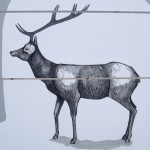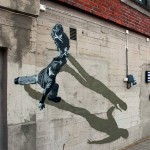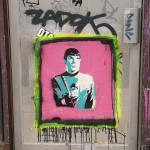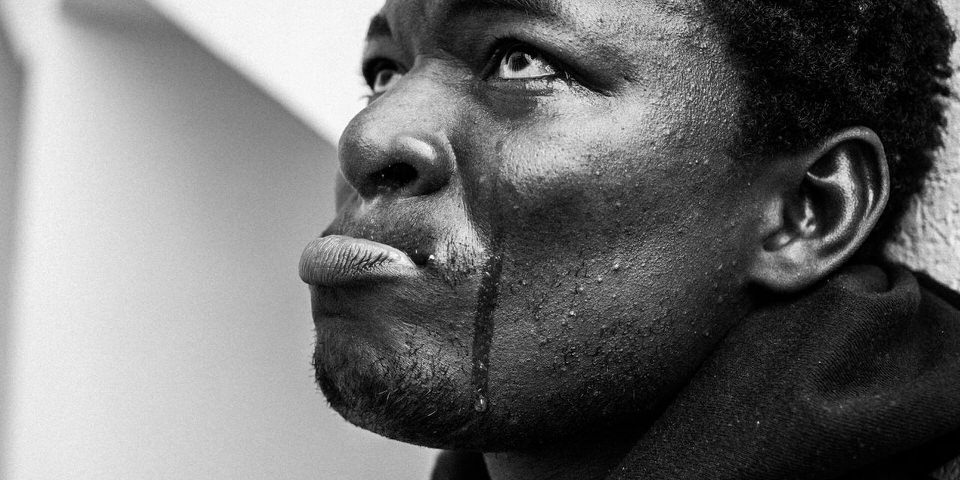 |
| Genesis + Ronald, Before Prom, Westchester Ave (May 2019) |
David ‘Dee’ Delgado has spent his entire life exploring New York City. Born and raised in the Bronx, in his younger years he traveled the city as a graffiti artist before transitioning into photography. “I got busted a couple of times and I got tired of getting locked up for doing graffiti,” he says. “So I started taking pictures of my friends.”
He worked as a graphic designer but says he found himself in a creative rut in a career where all his creativity was expended on behalf of the clients – “it was soul-draining in a sense.” And so Delgado found himself gravitating back to his cameras. Six years ago, at the suggestion of his wife, he quit the job that he hated and dove head-on into documentary photography.
Shot entirely on 4×5 film, Delgados project, ‘On My Block’, is an homage to the people and places that make New York City so special
These days Delgado works as a freelance photographer for clients like Getty, Reuters, Gothamist and others. He’s spent the last year very busy, on the ground documenting stories about COVID-19, the George Floyd police brutality protests and the 2020 election. In between all of that he’s continued to work on an ongoing personal project called On My Block, which he debuted earlier this year on his Instagram account.
Shot entirely on 4×5 film, On My Block is a homage to the people and places that make New York City so special. We spoke with Delgado to learn more.
 |
| Saint Guadalupe, Simpson Street (February 2019) |
When did you start shooting images for On My Block?
I started photographing On My Block in December 2018, I went into it with a direct purpose, although it has morphed. In the beginning, I was thinking about it in terms of gentrification – I’m a native New Yorker, I was born and raised here and I’ve seen how much the city has changed. I turn 45 this year, so I’ve been around for a decent amount of time.
Shooting 4×5 is a lot slower, especially when you are using a field camera. It slows things down and lets you connect to people, have a conversation and an interaction
I started seeing the city change so much and was reminiscing back to when I was a graffiti writer and I would go around the city. I decided I wanted to document the city and the people in it. What they are and how I remember them and how I remember it being like. That’s when the project morphed into more of a love letter to New York and less about gentrification. It’s a love letter to the city that I love and know.
 |
| Black and his Son Liam, Barber Shop, Cypress Ave (February 2019) |
What camera are you using to shoot the work?
I did not want to shoot digital for this project. I have my cameras that are meant for assignment work and then I have my cameras that are my personal cameras that I use just because I love the medium.
This gives me a break and it gives me the ability to be a little more artistic. As opposed to the hard news, with this, I can slow down and make a pretty photo
This whole project was shot on a Toyo 45A which is a 4×5 field camera. It’s not a light camera. It’s a heavy camera. Lugging that camera along with the film, film holders, and a dark cloth is not an easy task. Shooting 4×5 is a lot slower, especially when you are using a field camera. It slows things down and lets you connect to people, have a conversation and an interaction, you can make the connection through the camera in a sense. It just slows down the whole process.
Why was it important to shoot on film? How do you select what film stocks you use for this project?
I’m a big film buff and I knew I did not want to shoot this in black and white. I wanted it to look less documentary and more personal. The project was shot on Kodak Portra 160, I just found the soft and warm tones of the film leant themselves to what I wanted the project to look like.
 |
| Kayla, Malcolm-X Boulevard and W.117th St (July 2019) |
How does being born and raised in the Bronx influence the way you see and photograph in other New York City neighborhoods?
When you are young in New York it’s like, ‘don’t leave the stoop,’ but I always wandered. I would always push. ‘I can make it down the block to the bodega before mom notices.’ I always pushed the boundaries of where I was allowed to go. Once I became a little bit older and I was able to leave the stoop I would jump on the subway and I would pick a stop and go there. I would end up in Prospect Park, I would end up in Queensbridge, I would end up in Washington Heights.
I was always pushing the boundaries of my borders and was interested in embracing the city for what it is: multinational and multicultural
I’ve always been the person that was talkative and I would speak to people, I would connect to people. I’d be in Queens and when I was growing up, people in Queens used to use slang that was called ‘dun language’, and me being from The Bronx, I didn’t know how to speak dun language. But then I met guys who did and I would practice my dun language with them.
Then I’d be in the Heights, you know I’m Puerto Rican, and I’d be around the Dominican community and they are having Tres Golpes for breakfast and I was like ‘what the hell is that?’ and its salami and fried cheese and yucca, and I’d try it. I was always pushing the boundaries of my borders and was interested in embracing the city for what it is: multinational and multicultural.
 |
| Monica Flores, Macy Place, and Prospect Ave (December 2018) |
Do you see this work as being related to the work you do as a freelance news photographer, or is this a project that gives you a mental break from that world?
This gives me a break and it gives me the ability to be a little more artistic and have a little bit more freedom. As opposed to covering the hard news, with this, I can slow down and make a pretty photo.
What can we expect to see as you continue the project?
It’s a project that is morphing on a continuous basis. Right now I’m playing with archival photos, I may include a different factor of photography in it. Chapter 2 is something I am still playing with.
What’s your quintessential New York food and where is the best place to get it?
Oh wow. Hmm. One of my favorite things – I was raised in Little Italy in the Bronx, 183rd and Crotona – is Madonia’s chocolate bread on Arthur Avenue. That’s definitely something that if you are here in New York, you have to try.
More photographs from On My Block
$ (document).ready(function() { SampleGalleryV2({“containerId”:”embeddedSampleGallery_0775908954″,”galleryId”:”0775908954″,”isEmbeddedWidget”:true,”selectedImageIndex”:0,”isMobile”:false}) });
About:
David ‘Dee’ Delgado is a Puerto Rican independent photographer based in New York City mainly focused on documentary and photojournalism. The interest in learning and his desire to help people made him realize the necessity of documenting his surroundings and broadening the conversation with the use of a camera. See more of Dee’s work on his site, dispatch.nyc.
Articles: Digital Photography Review (dpreview.com)









































You must be logged in to post a comment.